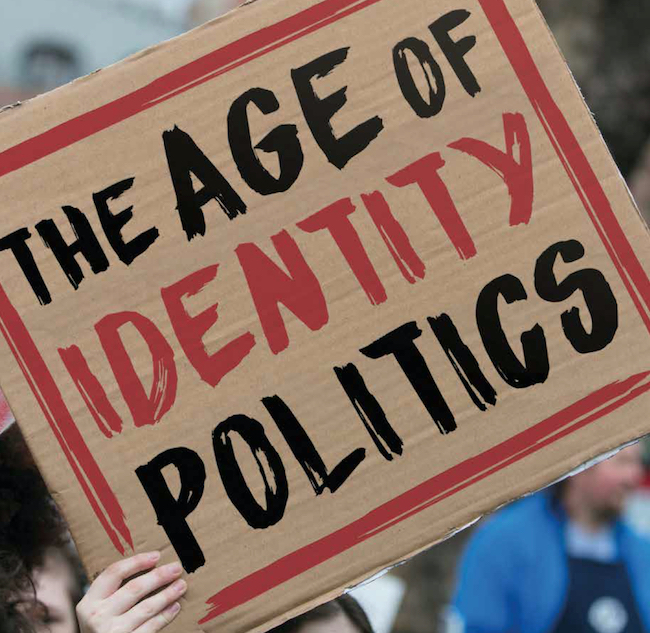LESSONS HAVE NOT BEEN LEARNED. THE STORY OF KIWI BORN JOHN WILLIAM MONEY SHOULD BE TOLD TIME AND TIME AGAIN PUBLICALLY. Firstly the theory of ‘gender neutrality’ namely ‘gender identity’ was developed primarily as a result of gender theory of social learning ‘nature vs nurture’ from early childhood, that it could be changed, just like changing your clothes everyday with behavioral interventions. Below I will share with you some of my research I have undertaken of Kiwi born psychologist David William Money and the identical twins Bruce & Brian Reimer who lived in Winnipeg Canada. At 6 months old the twins had problems urinating, at 7 months of age they underwent circumcision, the operation on Bruce went badly wrong, his penis was burned beyond surgical repair. The twins parents contacted many doctors for help to no avail. Then one day the Reimers were watching a program on Canadian News of John Money being interviewed about gender. They contacted John Money who was a psychologist at the John Hopkins Medical Institute in 1967. Money was known as a pioneer in his field of sexology and gender’
John Money’s theory was ‘gender neutrality, he based his work on intersex patients, that gender identity could be changed through using the appropriate behavioral interventions. A gender identity theory as a result of social learning. (I noted that this is exactly what is happening in schools in NZ across the world today, the sexualization of children through behavioral interventions eg using pronouns, choosing what gender school students want to be- gender diversity teaching (gender fluidity). Plus the governments introduction of changing an individual’s biological sex on birth certificates if they so require..
The identical Reimer twins became the guineapigs of John William Money’s gender theory. He decided that Bruce Reimer would be happiest living as a woman with functioning genitalia. He used Brian Reimer in the guineapig human experiements. This was known as ‘Joan and Joan Case Study’, where one boy would be raised as a girl the other a boy. Because Brian shared his brothers genes he was used as a ‘’control’ in the experimentation. (Nature vs Nurture). John Money persuaded Bruce’s parents that Bruce should have a ‘sex reassignment’ surgery, saying it was in Bruce’s best interests. This was performed and a rudimentary vulva was fashioned to replace Bruce’s testes so he could be raised as a female in his biologically male body he was then renamed as Brenda. The twins visited John Money every year for consultations, a social learning concept of gender identity. The boys visited John Money’s clinic until they were 13 years old. John Money’s guinea pig experiments on the twins included ‘childhood sexual rehearsal play’ where the boys were ordered to play at thrusting movement and copulation. They were forced to do sexual acts with Bruce (now Brenda) playing the female role. John Money placing Brian crotch between Brenda’s buttocks, forcing Brenda’s legs open with Brian laying on top. Money took photo’s of the sexual acts, and often other students-colleagues would be the audience.
If the twins resisted John Money’s orders he would become very angry and aggressive, ill tempered with the children. He made Bruce (Now Brenda) take of his clothes, when he resisted money would shout at him louder and louder ‘NOW, NOW, NOW”, so he fearfully obeyed him, standing their naked and shaking. These boys were 6 years old when these sexual acts were forced upon them by John Money, both the boys were highly traumatized by being Money’s gender guineapig theory. They suffered extreme depression, especially Bruce (Brenda) being stuck in a female body being biologically male. He never ever accepted he was female. Later Brenda who had received Estrogen hormones through John Moneys experiments had grown breasts, then underwent reconstruction surgery and took testosterone and renamed himself David Reimer. Both the twins suicided in their 30’s. David shot himself and Brian overdosed. Their parents said that their sons suicides were because of John Moneys guineapig study on them. But John Money proclaimed the his study on the Reimer twins as successful. By the time David was 15 years old he was living as a male. David in going public tried to discourage similar practices. At 13 years old he experienced suicidal depression he ceased going to school at 14 and was tutored privately.
On March 14th 1980 the Reimer twins were told the truth about the sex reassignment by their parents. David underwent a double mastectomy and other operations including hormone treatment in an effort to return to his maleness. At school he had been bullied and called a ‘cave woman’. Later David was employed in a slaughterhouse, he then met Jane Fontane, they got married and David adopted her three children., he continued to suffer severe depression and the threat of a marriage breakup lead to David shooting himself in the head with a sawn off shotgun. His identical twin brother Brian had suicided by an overdose only 2 years earlier..The Reimer twins story, the biography of David Reimer was published by John Colapintgo in the ‘Rolling Stone’ magazine in December, it won the ‘National Magazine Award’. The New York Times published ‘As Nature Made Him: The Boy Was Raised As A Girl’ (2000) this included how in John Moneys experiments
David refused to be identified as a girl, he was ostracized, bullied by peers dubbed him a ‘cave woman’. Davis said “that no frilly dresses nor hormones made him feel female” David’s relationship with is parents was difficult.. Researcher Mary Anne Case reported that John William Money’s gender based theory also fueled the rise of the anti-gender movement. John Money deliberately concealed the fact that David Reimers sex reassignment to being a female was not going well. John Money was referred to by Judith Butler in her 2004 book ‘Undoing Gender’ which examines gender, sex, psychoanalysis and medical treatment of intersex people. Horizon a BBC series based 2 episodes on the life of ‘The Boy Who Was Turned Into A Girl’ in year 2000 and also a documentary on ‘Dr Money and the Boy With No Penis’ in 2004. A PBS Documentary series ‘Nova’ entitled ‘Sex: Unknown’, investigated David Reimers life.A BBC radio episode called ‘Mind Changers’ was about the ‘John & Joan Case’- The boy who was raised as a girl, the impact of two psychological theories of ‘Nature vs Nurture’ Other related stories about David and his identical brother Brian were:-
Chicago Hope episode ‘Boys will be girls’’ year 2000. Explored the theme of a child’s right to undergo sexual reassignment surgery without consent. David Reimer and his mother appeared on the Oprah Winfrey Show in 2000 and the ‘Laws & Order Special Victims Unit’ episode called ‘Identify’ (2005) was based on David & Brian Reimers lives and their treatment by John William Money.
A song by Winnipeg ‘Indie Rock Band called ‘The Weakerthans’ had concerns about David Reimer and produced the ‘Hymn of the Medical Oddity’. A 2016 play titled ‘Boy’ produced by Ensemble Studio Theatre was inspired by the Reimer story and a Taiwanese film ‘Born to be Human’ (2021) shared a similarity to the Reimer story where a child undergoes sexual reassignment surgery without consent at the insistence of an authoritative doctor.
WHO WAS JOHN WILLIAM MONEY? He performed one of the most immoral experiments that helped give birth to the trans-movement due to his sinister origins of gender ideology (Lauren Smith 5/2/2023). Biological sex does not determine ones gender identity. the being born biologically male or female. Trans gender ideology can be traced back to John William Money (1921-2006). He was born in Morrinsville in 1955, the first person in his field of sexology to use the word ‘gender. He popularised the term ‘gender identity’, founded the worlds first ‘gender identity’ clinic at John Hopkins University Baltimore in 1966. Above all John Money pushed the view that is so central on todays trans-movement. Without John Money its unlikely that trans ideology, especially the phenomenon of ‘trans-kids’ would exist the way it does today. (The social engineering in schools namely ‘gender diversity’ teaching.). John Money believed that children at the age of 2 yrs old pass through a ‘gender identity gate’. He determined whether one is male or female biologically this could be socially engineered into another fender (gender fluidity- gender diversity)
Without Money, it’s unlikely that trans ideology, especially the phenomenon of ‘trans kids’, would exist today in the way that it does. His ideas uphold trans activists today namely male or female is not biologically determined. That some-one born with male sexual organs can still become female. John Money is rarely heard of because his experiments were cruel, creepy and immoral, he left a trail of misery, pain and suicide in his wake. John Money has been criticized as his main interests were that gender identity development of children with normal sex characteristics, that he wanted to apply his theory about the malleability of gender to all children. To test his theory on normal biological infants male or female it had become a problem for Money because what parents would allow their healthy babu to be streamed into the opposite gender, undergo countless operations, intensive therapy sessions/ Rolling Stones magazine article of David Reimers story fell into their hands. The media championed John Reimers work in 1973 in the New York Book Review described ‘Man, Boy and Girl as ‘ the most important volume in social sciences to appear in the Kinsey Reports, solved the age old question of ‘Nature vs Nurture’, landing on the side of ‘Nurture’. 4.This became the foundation of future writings that helped to legitimise sex assignment surgery for children worldwide. At the onset of David Reimers puberty David Money decided that David should have female hormones asap.
The ‘Sigmundson’ Paper this became controversial was published in 1997 this became controversial in the scientific community, however it convinced a large number of paediatricians that John Money’s theory on the gender neutrality of babies was flawed that his treatment of intersex babies in most cases caused more harm than good. Lessons have not been learned from the John Money’s cruel callous human guineapig experiment of the Reimer twins, that gender is not fluid cannot be shaped at will through medical interventions and hormone treatments. The Reimer twins were sacrificed at the alter of gender ideology, it was a tragedy, but the ideas of gender identity and gender fluidity are still promoted even in our schools. Many politicians treat trans gender ideology as ‘progressive’ however they should be held accountable, responsible for using children as the gender fodder for gender diversity experimentation. Now the schools from a tender age embrace gender ideology, do the teachers know about John William Money how be trailblazed the idea of the ‘trans-child’, have they any idea of the devastating impact he has on the Reimer family life, of the Reimer twins?
The Central and Local Government (Councils) in New Zealand and other country’s governments are promoting ‘gender diversity’ on children from Kindy age to the end of senior school and beyond. The tragedy, cruelness, misery, heart breaking sadness, the inhumane immoral undignified experimentation of the Reimer twins by Kiwi born John William Money must be continuously publicly shared, it is a tragedy that should never have happened, one that must be learned by. New Zealand politicians need to be held accountable for the unacceptable sexuality gender diverse teaching of our children in schools. Drag Queen Story Time to children in council run libraries must be stopped now. This is adult entertainment, and disrespectful imaginary that depicts women. Men dressed up in drag queens. This is not so called family fun as advertised. This is genderised insanity. In our adult sanity we as sane caring adults demand that ‘ENOUGH IS ENOUGH’ this stops NOW. United must stand as caring, loving parents, family, friends to protect our children from this evilness. The message to the NZ political cronies in the toilet bowl of Wellington is “KEEP YOUR GRUBBY POLITICISING, SEXUALISING HANDS OFF OUR CHILDREN” NOW’
I URGE YOU TO SHARE THIS STORY SEND IT TO YOUR FAMILY AND FRIENDS.
NOTE: Of all the governments in the world NZ Government have the most numbers of LGBT+ Transgender political cronies. Newshub headline reports that New Zealand has the ‘Queerest’ Parliament In The world 18th October 2020
LINKS:
https://www.newshub.co.nz/home/politics/2020/10/new-zealand-now-has-the-gayest-parliament-in-the-world.html
https://en.wikipedia.org/wiki/David_Reimer
. https://www.spiked-online.com/2023/02/05/dr-john-money-and-the-sinister-origins-of-gender-ideology/
...




